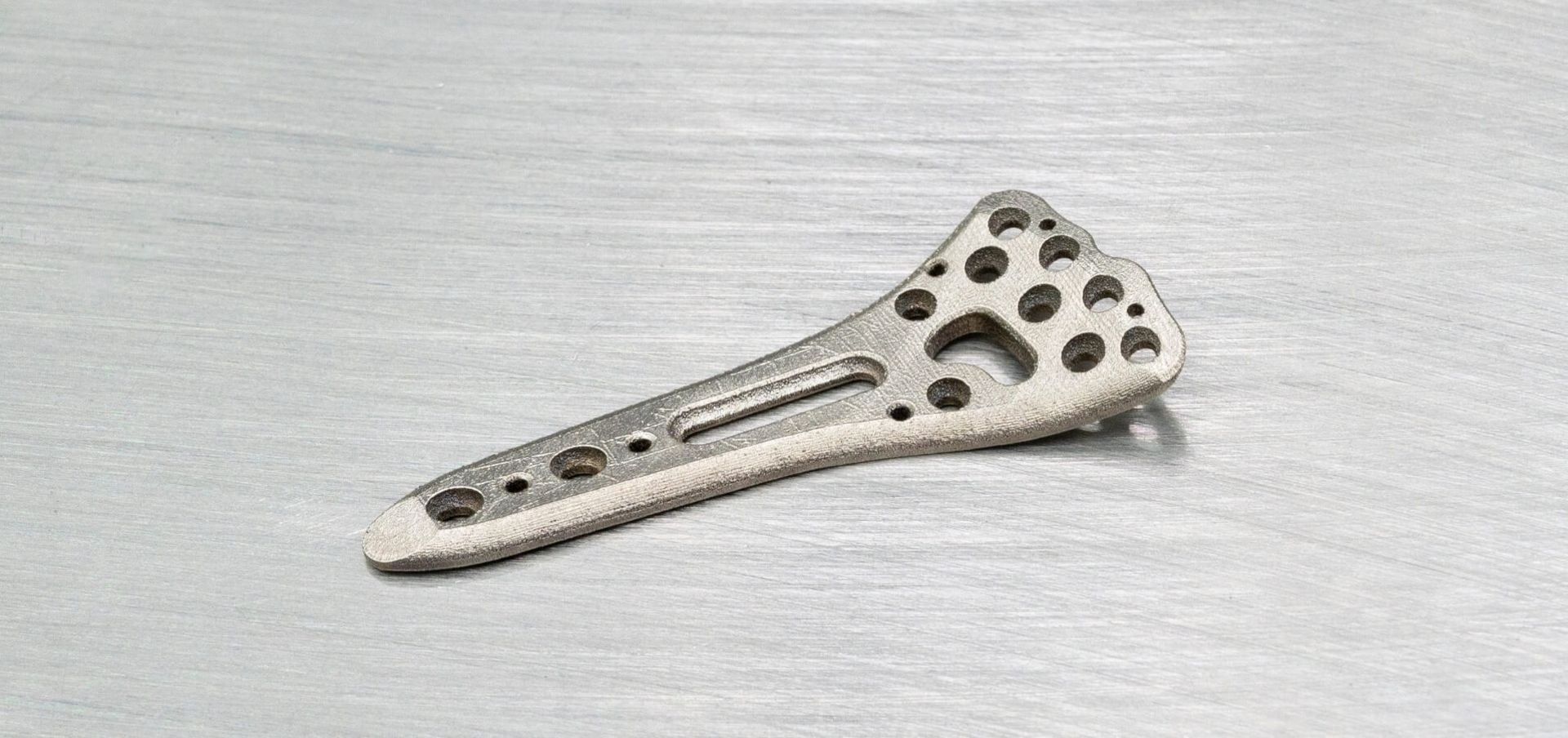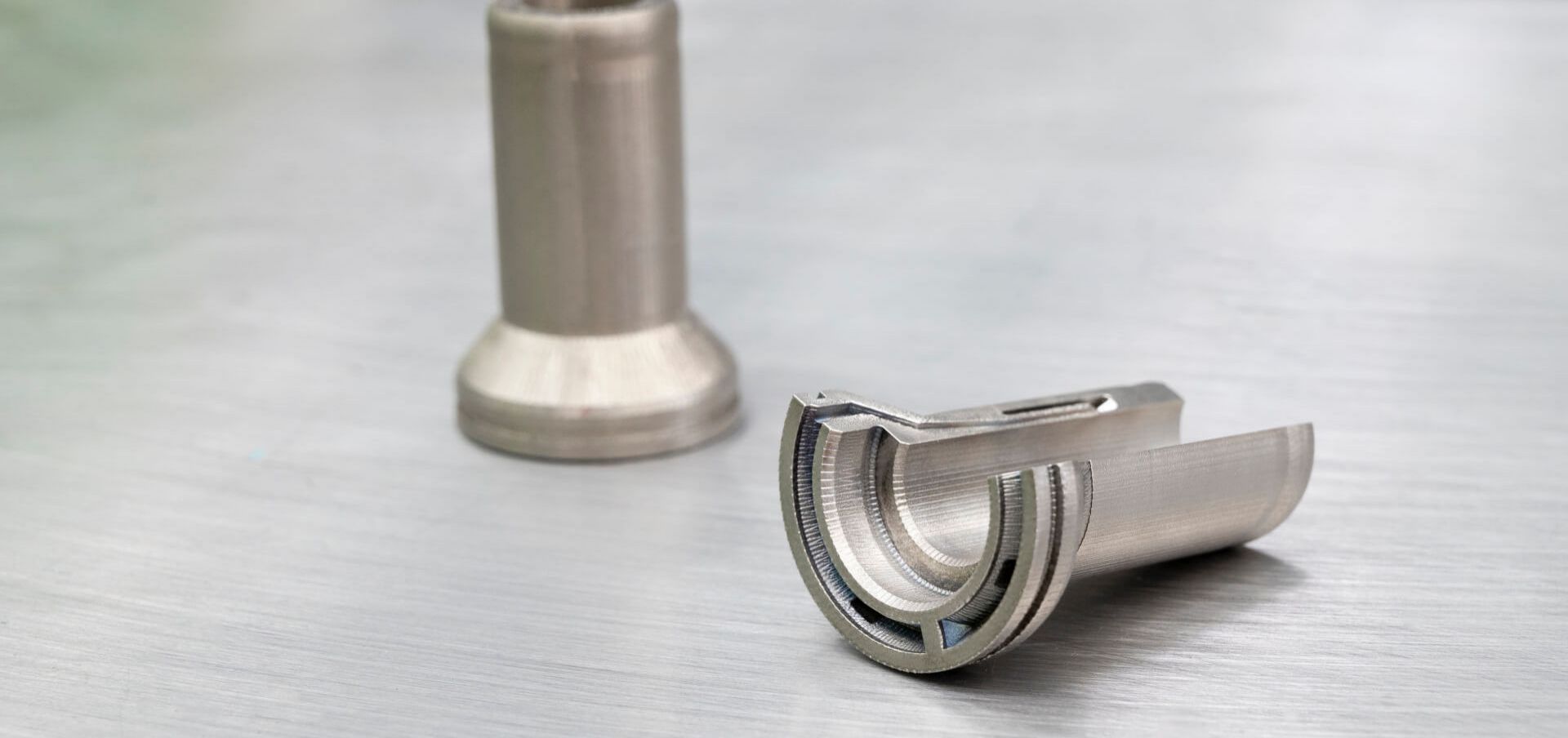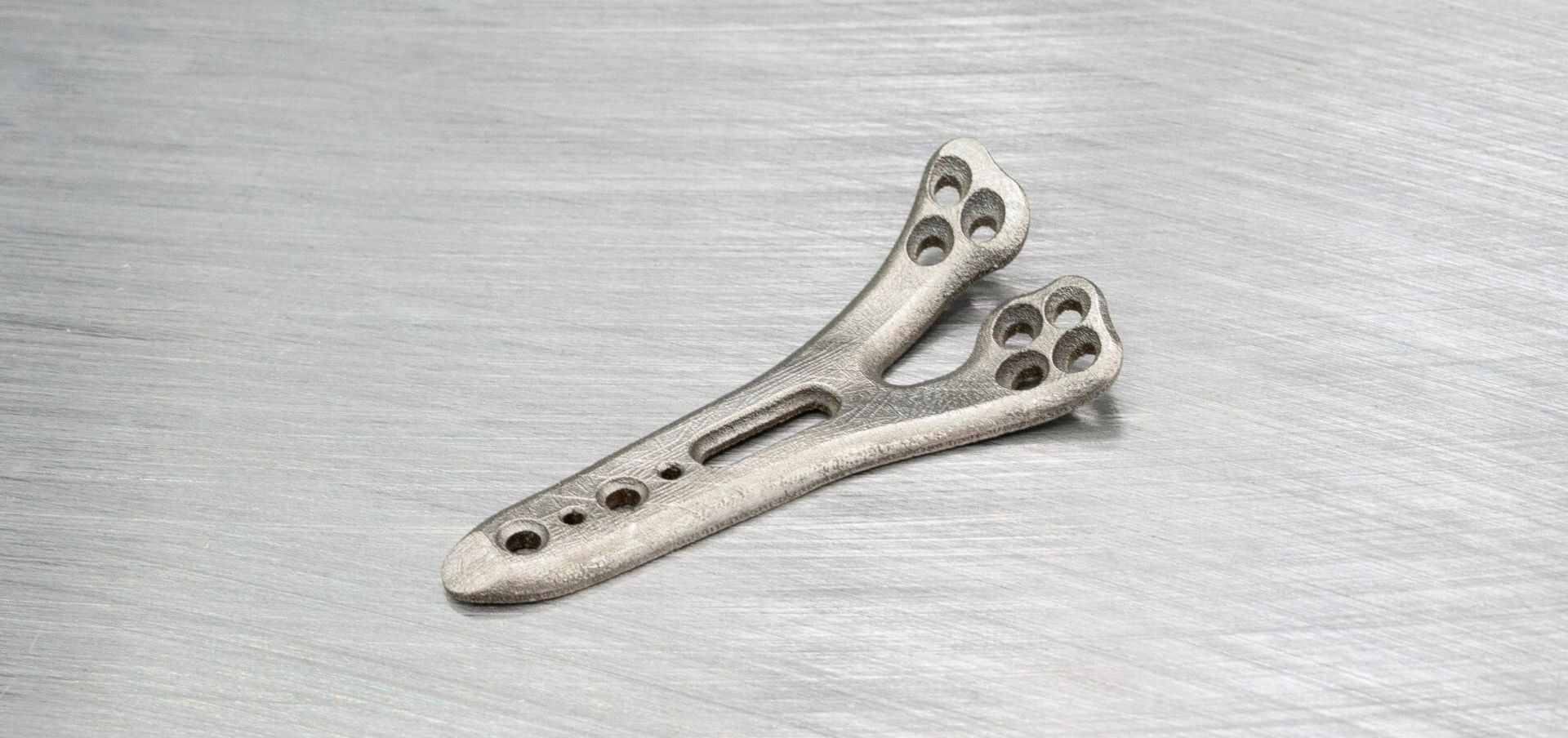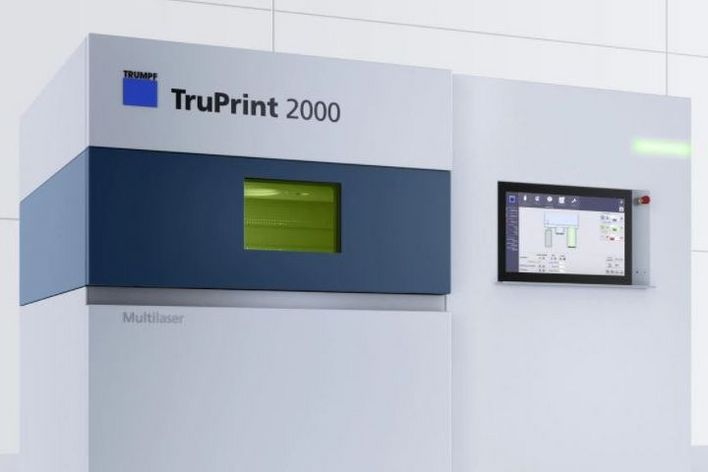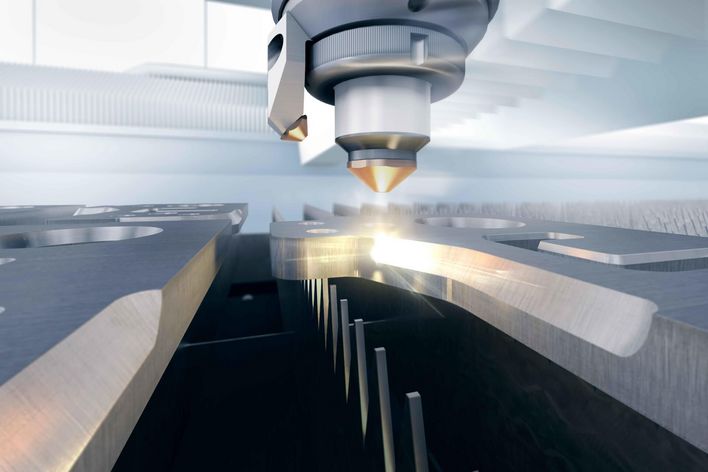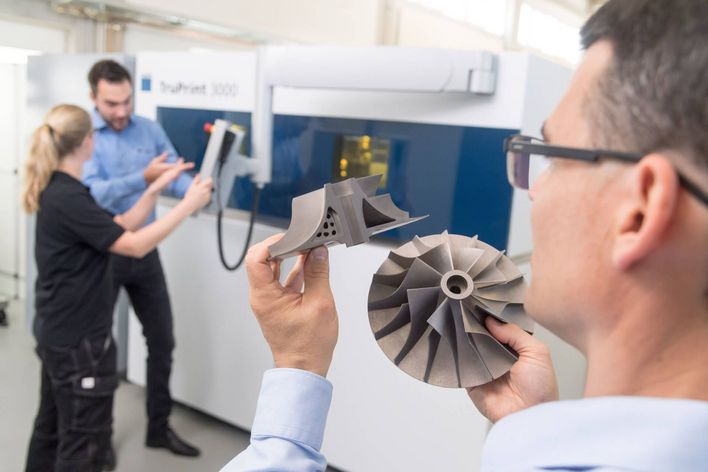Ms. Melde, what is currently stopping us from producing precision implants using 3D printing?
Among other things, the requisite mechanical properties. Bones are extremely lightweight, exceptionally hard and highly flexible. Today’s materials merely offer a compromise between these attributes. Metallic materials, for instance, are too stiff, whereas polymers are too soft. 3D printing, however, could make it possible to produce customized implants.
And that would be desirable?
Yes. As things stand, surgeons often have to improvise in order to adapt series-produced implants to patients’ bodies. They bend them into their final form by hand and fix them in place using screws. That’s why we want to help.
And how?
By printing precision implants from a unique material: amorphous metal.
Sounds pretty fancy. What’s amorphous metal?
In normal molten metal, the atoms buzz around wildly. When the temperature falls, they slow down and arrange themselves in the most energetically favorable form, i.e. the crystal structure. If, however, the molten metal cools down at 200 kelvins per second, the atoms are unable to arrange themselves in position and are instead frozen in their molten state. The shapeless confusion of the atoms is retained in the solid metal. Here at AMLOY, we develop alloys that enable this process. Incidentally, the same phenomenon can be observed in glass, which is why amorphous metals are also referred to as “metallic glass.”
And how does this help in terms of implants?
Since amorphous metals do not have any crystal structures, they behave very differently to “normal” metals. For example, they are extremely robust, highly flexible and exceptionally resistant to wear and tear. Just like bones, the implants are therefore able to withstand considerable stresses and strains. And not just in the form of knocks and other impacts. Think about all the biting and chewing that jawbones have to contend with – or the fact that ribs have to endure some eight million breathing motions a year.
And 3D printing can handle amorphous metals?
With aplomb! In collaboration with TRUMPF, we have enhanced the process so that we can work with an exceptionally fine focus and extremely small volumes of molten metal. As such, the heat is quickly conducted away. In turn, this facilitates the critical cooling rate of 200 kelvins per second; an individually customized implant emerges from the powder bed and solidifies with an amorphous structure.
So two in one.
Even more, in fact! The 3D printing of amorphous metals offers yet another decisive advantage: we are much more flexible when it comes to the alloys. We already have zirconium-based alloys. At the same time, we are also working on an amorphous, titanium-based alloy. We are optimizing this and all our other alloys for 3D printing. They are particularly sought after in the medical technology sector, as AMLOY amorphous alloys feature an elastic modulus similar to that of human bones, which is a huge advantage in terms of the healing process and the resilience of the previously weakened body part. Our alloys are corrosion-resistant and biocompatible.
When will I be able to have the first printed implants fitted?
This is something that we are currently testing in tandem with partners such as TRUMPF as part of the Clinical Additive Manufacturing for Medical Applications (CAMed) project at the University of Graz. The results are promising, and we are already able to manufacture implants that can then be tested and approved by our clients. So the idea of us printing your bones is already reality.


